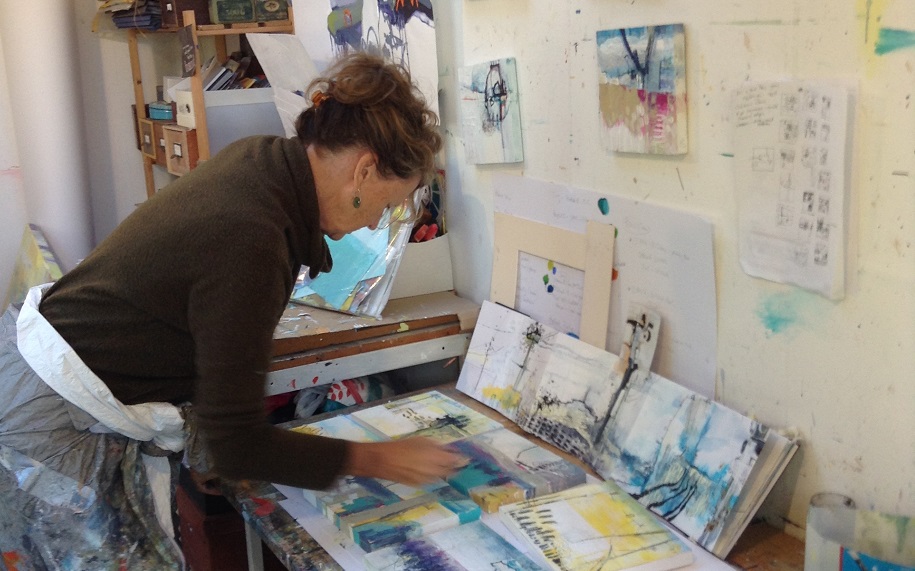Collage as a Reflection of Life: The Art of Karen Stamper01/04/2023Author: Millie Freeth
Karen Stamper is a highly respected abstract collage artist who has gained a significant reputation in the UK. The term “collage” describes both the process and the outcome of splicing materials together whether that be digitally or traditionally cutting and sticking paper, photos, fabric etc. Karen Stamper’s collages use this method to create echoes or simplified, flattened memories of often urbanised or tired landscapes. Although Stamper’s artworks are almost as far from conventional realism as possible, these vibrant explorations of colour and form truly highlight that the meaning behind an artwork does not need to rely on explicit imagery to convey the artist’s true message. “I am an artist and traveller. I am drawn to the worn and the weathered: town allotments and old boatyards. To new countries, the colours and the light of the Mediterranean. Life is a collection of experiences; I need to draw, collect, layer, and absorb the places I visit until they are embedded in my artwork and in me. The visual energy of composition, colour and surface feed my soul.” There is something so exciting about Stamper’s collages looking on first impression as though they’re 2D acrylic paintings, and then, you begin to dissect and the more you look, the more materials leap out at you!
Sometimes collage can be associated with more naïve art where materials are randomly applied to create more vague or simplistic shapes. Stamper’s placement of blocks of colour and forms are well calculated and deliberate which allows them to convey a concise narrative. The crane that consumes the top right portion of this piece is so dark in comparison to the rest of the scene which makes it so much more prominent and eye-catching. The contrast between the crane and the yellow/peach tones makes it look as though it is protruding out of the city smog, looming eerily in the distance. Next to the hook of the man-made giant is an area of blue and black, geometric stripes. In other settings, this mark-making may go unnoticed and would definitely have another narrative tied to it. But here, I see corrugated metal roofing sheets which are strong and undeniably a staple within a human’s urban city. There are echoes and murmurs of text and graffiti; man-made structures and colours, that feel like clues to guide us towards the overall theme without forcing us to perceive. There is a magnificent glimmer of something gentler hidden within this piece.
The human race is undeniable, its effects are unavoidable. Stamper celebrates this because why bother hiding the beauty and accomplishments of our people? There is a lightness and optimism within all her work and an appreciation for the mundane and forgotten; a perspective that not everyone is lucky enough to get to experience. She also has the influence from her travels to sunnier (and arguably more cultured) lands such as Turkey, Greece, India, Morocco, The Caribbean and New Zealand. This adds even more depth because maybe you don’t know the exact location that inspired a collage and maybe you don’t need to. Urbanisation exists within her childhood upbringing on the East coast of Yorkshire, it exists across the warm Mediterranean countries. It exists across the globe wherever we have settled and it will continue to spread, and Karen Stamper will continue to capture this presence and passage of time in her own unique, abstract way. She captures the essence of the human presence, but more importantly, she is part of the human presence. |
Collage as a Reflection of Life: The Art of Karen Stamper |


Comments